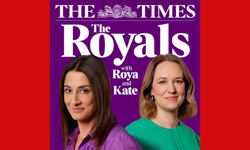The twentysomething woman ahead of me in the queue to enter Apple’s flagship Brighton store at opening time the Sunday before last could barely conceal her contempt at my naivety when I enquired whether she was waiting to buy a new iPad. ‘Hardly,’ she responded. ‘Don’t you know there’s a waiting list? I’m here to place an order – it’ll be a month before I actually get to take one home.’
Like many other early adopters, she’d sacrificed a lie-in to secure early ownership of 2010’s must-have gadget, a version 1.0 product, at full list price, with the cheapest version weighing in at £429, the most expensive requiring a hefty £699 investment and most users adding £50-100 in accessories. Publishers who are hoping to monetise digital content will be praying that she and many like-minded thousands will be equally generous with their credit cards when the time comes to fill their home screens with apps.
But will they? My bet is yes – initially, at least. Just as there’s no point in owning a car without fuel to put in it, an iPad is impotent without engaging, useful applications. But with few newspaper and magazine publishers yet offering UK-focused apps and users’ virgin screens in urgent need of filling, today’s supply-demand ratio is not a fair representation of how the market will settle down.
Received wisdom suggests that consumers will happily pay for content they can download (music, movies), even though few will do so purely to view or listen (web pages, streaming). The hope is that iPad will stretch this principle: because downloading (of an app) is involved, users will pay subscriptions (to view updated content using the app). And these subs aren’t cheap: the Times, for instance, charges £9.99 a month.
Trouble is, as users add apps, so their monthly subs’ bills will climb. Pretty soon, they’ll be taking long, hard looks at what they’re paying for, and deleting those that are seldom used, or priced more highly than their rivals. And the App Store marketplace is a very transparent one, with consumers easily able to compare apps by type, and with the entry cost to publishers likely to plummet as the ability to develop apps becomes commoditised, it’s likely that they will have plenty of choice.
The reason why consumer websites are overwhelmingly free to access is that the marginal cost to serve an additional user is close to zero: copyright is purchased on an all-rights or per-use basis, not per user, and bandwidth costs peanuts. And – in good times, at least – there’s the prospect that users can be monetised through advertising, affiliates and ecommerce to generate greater income than that potentially forfeit by eschewing paywalls.
Despite fashionable talk of ‘freemium’ models and premium content, this trend shows no sign of reversing: according to KPMG’s annual Media and Entertainment Barometer, spending on digital media almost halved in the six months to March 2010, with the number of people paying for news content sliding by 25 percent.
All the factors weighing against charging consumers to view editorial content online also apply to enhanced versions of that same content delivered via the window of an iPad app. So I suspect it’s only a matter of time before a downward pressure on pricing becomes a stampede to deliver free of charge. The one potential obstacle I foresee is Apple: the App Store has been an unexpected revenue stream with iPhone and is planned into the business model for iPad, and Jobs will be reluctant to deliver content for free. But with rival hardware firms likely to take a more flexible approach, only time will tell whether Cupertino is willing to risk its market-leading position by persisting with its proprietary-only policy that cost it so dearly in the home computing market.
The KPMG survey indicates that the trend away from paying for content extends to print media, as well as online, but that it is accompanied by an increase in the amount of media viewed. It showed a 20 percent fall in spend on print media, combined with a five percent increase in the time spent reading. This trend was most marked in London, where the Evening Standard’s switch to free distribution saw the proportion of newspaper readers paying nothing for their title soar from 23 to 41 percent.
Today, Mike Soutar’s Shortlist magazine distributes more free copies than Nuts, Zoo and Men’s Health sell; almost twice as many people are given its female counterpart, Stylist, as buy Grazia. And in a world in which excellent content is available free online, I wonder whether those who forecast the death of print may actually have missed the point: people still want newspapers and magazines, they just see a decreasing need to pay for information and entertainment delivered in that format.
So my take on the iPad is this: it’s a great platform, and I believe that some magazine and newspaper brands will flourish on it. But I suspect that the real winners will be those that come in later, when the development costs are lower, who don’t charge for content, but are great in monetising traffic in other ways. And, crucially, it doesn’t amount to a death sentence for print, though it may knock another nail into the ability to charge for it.










